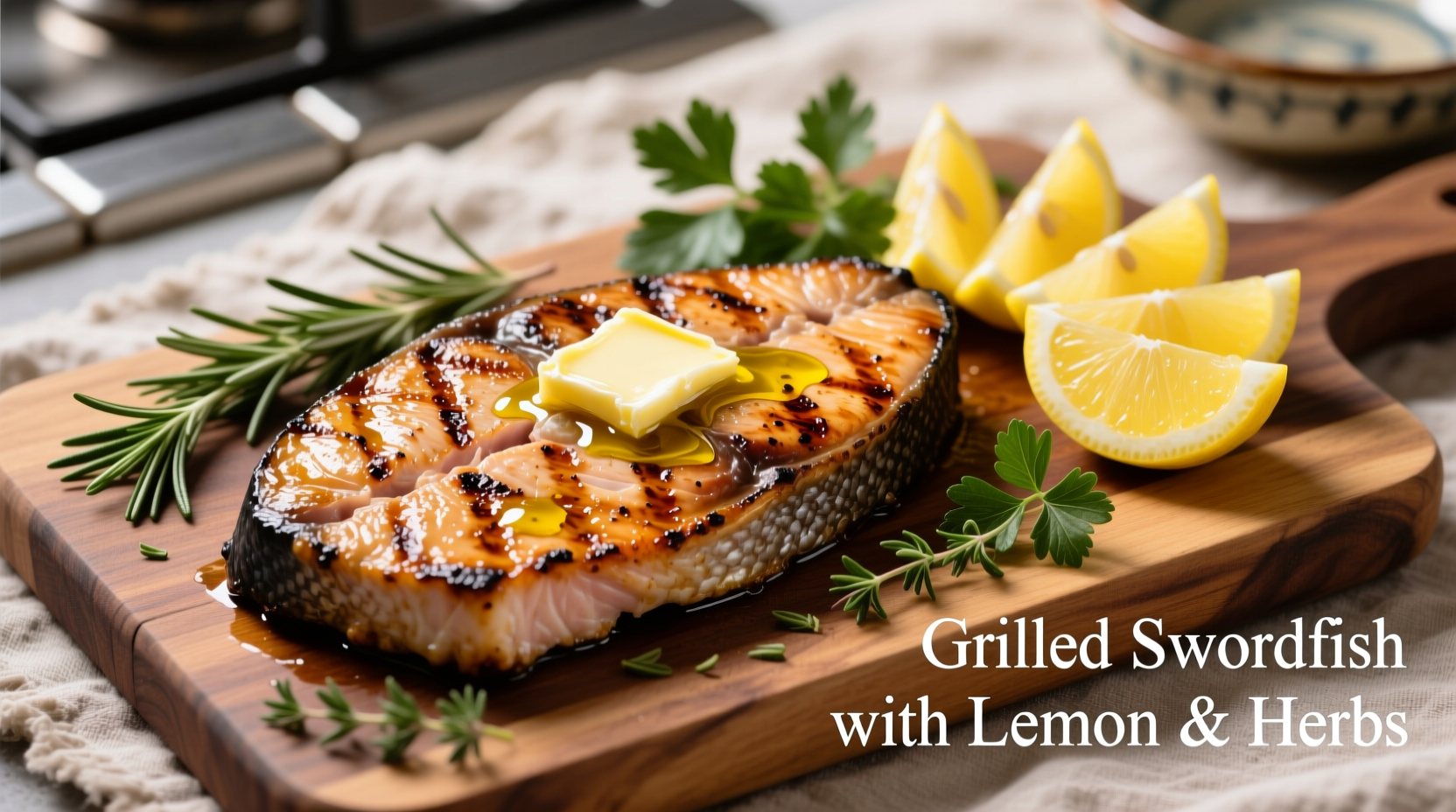When evaluating what swordfish tastes like, it's essential to understand this magnificent fish offers a unique culinary experience that sets it apart from other popular seafood options. As a chef who's worked with swordfish across various cooking environments—from Michelin-starred kitchens to coastal barbecue pits—I've developed a deep appreciation for its distinctive flavor profile and versatility.
The Complete Swordfish Flavor Profile
Swordfish (Xiphias gladius) delivers a rich yet refined taste experience that appeals to both seafood enthusiasts and those who typically avoid "fishy" flavors. Unlike more delicate white fish, swordfish contains higher fat content (approximately 1.5-2.5% fat), which contributes to its moist texture and ability to carry bold flavors without becoming dry.
The flavor can be described as:
- Mildly sweet with subtle oceanic notes that aren't overpowering
- Rich umami character from its natural glutamate content
- Low fishiness compared to stronger-flavored fish like mackerel
- Meaty quality that makes it suitable for steak-like preparations
When properly cooked, swordfish develops complex flavor compounds through the Maillard reaction, creating delicious caramelized notes that enhance its natural sweetness. The texture remains firm yet yielding—similar to a well-cooked chicken breast but with more moisture retention.
| Fish Type | Flavor Intensity | Texture | Fat Content | Best Cooking Methods |
|---|---|---|---|---|
| Swordfish | Moderate | Firm, meaty | Medium (1.5-2.5%) | Grilling, broiling, searing |
| Tuna | Moderate-strong | Firm, dense | Medium-high (2-4%) | Seared, raw, grilled |
| Salmon | Strong | Flaky, tender | High (5-10%) | Baking, poaching, grilling |
| Mahi-Mahi | Mild | Firm, flaky | Low (1-2%) | Grilling, baking, frying |
Factors That Influence Swordfish Flavor
Several elements affect what swordfish tastes like when prepared properly:
Freshness Matters Most
Fresh swordfish should have a clean, ocean-like aroma—not fishy or ammonia-like. According to NOAA's Seafood Inspection Program, properly handled swordfish maintains quality for 1-2 days refrigerated. The flesh should appear bright pink to ivory with no browning at the edges.
Cooking Method Transformations
The preparation technique dramatically impacts swordfish's final flavor profile:
- Grilling: Creates smoky char that complements swordfish's natural richness—ideal for what does grilled swordfish taste like inquiries
- Pan-searing: Develops a flavorful crust while keeping interior moist
- Raw preparations: When exceptionally fresh, can be used in ceviche where citrus "cooks" the firm flesh
- Overcooking: Causes the meaty texture to become dry and less flavorful
Regional Flavor Variations
Swordfish from different waters develops subtle flavor differences. Atlantic swordfish tends to have a slightly richer flavor than Pacific varieties due to dietary differences. The FAO's fisheries documentation notes that swordfish feeding patterns affect fat composition, which in turn influences taste.
Perfect Pairings for Swordfish Flavor
Understanding what swordfish tastes like helps create ideal flavor combinations:
Acidic elements like lemon, lime, or vinegar-based sauces cut through the richness. Robust herbs including rosemary, thyme, and oregano stand up to swordfish's meaty texture. Vegetable companions such as grilled asparagus, zucchini, or eggplant complement without overwhelming.
For those wondering does swordfish taste good with certain seasonings, consider these professional recommendations:
- Simple olive oil, lemon, and garlic marinade enhances rather than masks
- Chimichurri sauce provides bright herbaceous contrast
- Smoked paprika rub creates complementary depth
- Avoid delicate seasonings that get lost against swordfish's firm texture

Common Misconceptions About Swordfish Taste
Many people mistakenly believe swordfish has a strong fishy flavor, but this perception usually comes from improperly stored or overcooked fish. When handled correctly, swordfish offers one of the mildest flavors among oily fish.
Another misconception is that swordfish should be treated like delicate white fish. Its steak-like texture actually benefits from higher-heat cooking methods that would ruin more fragile fish like cod or halibut.
Is Swordfish Right for Your Palate?
If you're wondering what does swordfish taste like compared to other options, consider these scenarios where swordfish shines:
- When you want fish that holds together well on the grill
- If you prefer less fishy-tasting seafood options
- When serving guests who claim they don't like fish
- For recipes requiring substantial texture that won't flake apart
Swordfish's versatility makes it an excellent choice for what to serve when you need a seafood option that appeals to diverse palates while delivering substantial texture and balanced flavor.











 浙公网安备
33010002000092号
浙公网安备
33010002000092号 浙B2-20120091-4
浙B2-20120091-4